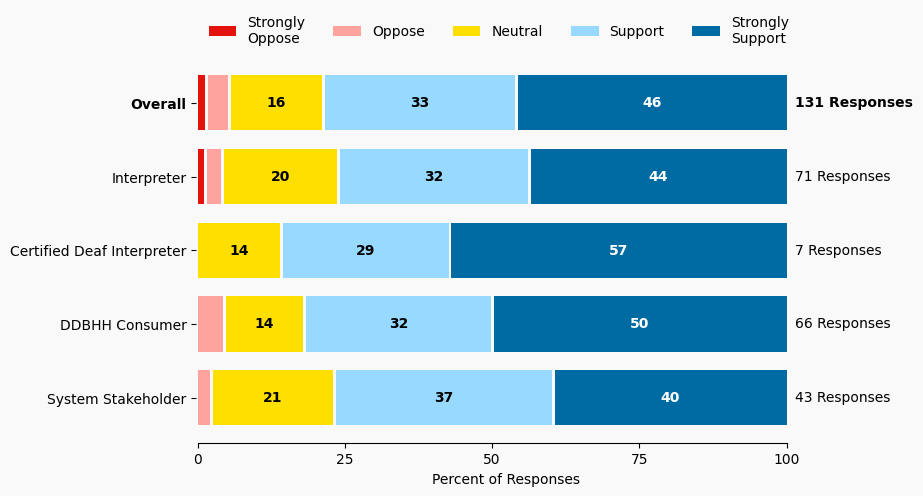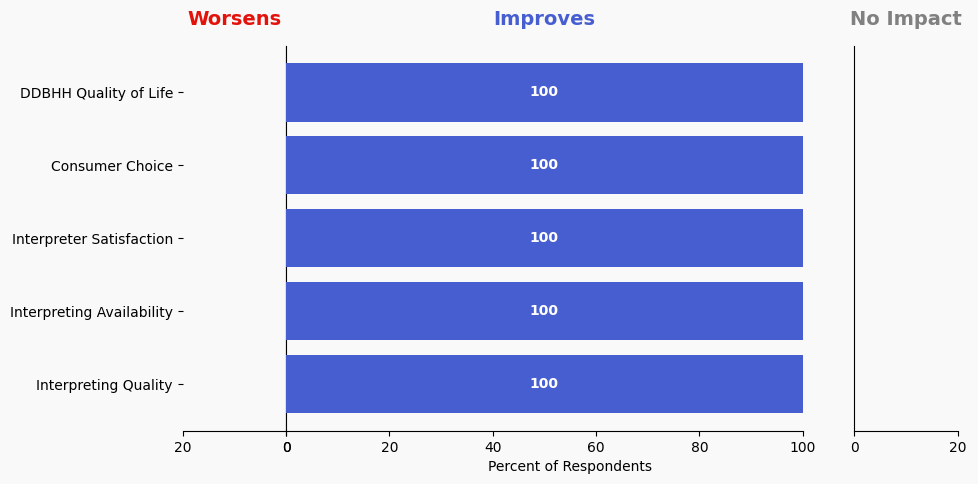44 Minnesota Judicial Branch Court Interpreter Program Hire Staff CDI
Issue: The Minnesota Judicial Branch (MJB) Court Interpreter Program does not have linguistically and culturally relevant expertise to coordinate interpreters for the DDBHH constituents appearing for court proceedings. Particularly as DDBHH constituents in legal settings are sometimes vulnerable persons with disabilities due to language deprivation, the need for linguistically and culturally relevant expertise is necessary for ensuring protection of rights for these Minnesotans. Currently, MJB does not have consistent practice of honoring requests from hearing interpreters (who are contacted first for assignments) to request CDI teams. Some coordinators say that only the DDBHH constituent or the judge is permitted to request a CDI. This is problematic because often judges and DDBHH consumers are not aware that a CDI is an option nor how it might benefit the accuracy of the proceedings.
Proposed Solution: Commission partner with MJB to advocate for funding to hire a legally-qualified staff CDI qualified. Primary duties would include language assessment, advisement on interpreting coordination and interpreting for Deaf, DeafBlind and Hard of Hearing Minnesotans. The staff CDI would also provide training to prospective interpreters and court staff, advise on quality standards for working interpreters and provide orientations to working in the courts for ASL interpreting. While the staff CDI is assigned to interpret, DDBHH consumer preference could still be honored.
Expected outcome: MJB will provide better services for and avoid any violation of rights for DDBHH Minnesotans. DDBHH Minnesotans will experience justice more on par with their peers who do not have a hearing loss.
Who is impacted: Consumers, court interpreters
Timeline: 6 months

Summary of Support Image Description
The stacked bar charts show how respondents rated their level of support and the total number of responses. The percentage for the five support levels is shown from left to right: Strongly Oppose (Dark Red), Oppose (Light Red), Neutral (Yellow), Support (Light Blue), and Strongly Support (Dark Blue).
Respondents may identify with multiple subgroups. The overall level of support is:
Overall
Strongly Oppose: 2%
Oppose: 4%
Neutral: 16%
Support: 33%
Strongly Support: 46%
Click to see the detailed image description for each subgroup.
Interpreter
Strongly Oppose: 1%
Oppose: 3%
Neutral: 20%
Support: 32%
Strongly Support: 44%
Certified Deaf Interpreter
Strongly Oppose: 0%
Oppose: 0%
Neutral: 14%
Support: 28%
Strongly Support: 56%
DDBHH Consumer
Strongly Oppose: 0%
Oppose: 5%
Neutral: 14%
Support: 32%
Strongly Support: 50%
System Stakeholder
Strongly Oppose: 0%
Oppose: 2%
Neutral: 21%
Support: 37%
Strongly Support: 40%
Overview of Respondents Opting for In-Depth Solution Analysis
After indicating their support level, 3% of the 131 respondents opted in to further assess whether the solution would worsen or improve on five metrics. Of the opt-in reviewers (5 respondents), 80% supported the solution, 20% were neutral on the solution, and 0% opposed the solution.
The remaining 126 respondents did not opt in to further assess the solution. Of these people, 78% support the solution, 15% were neutral on the solution, and 5% opposed the solution.
Reviewer Evaluation of Solution Effectiveness

Solution Effectiveness Image Description
The stacked bar charts show how respondents assessed the effectiveness of this solution based on five metrics. For each metric, the percentage of respondents is shown from left to right: Worsens (Red), Improves (Blue), No Impact (Gray).
DDBHH Quality of Life
Makes It Worse 0%
Makes It Better 100%
No Impact 0%
Interpreter Satisfaction
Makes It Worse 0%
Makes It Better 100%
No Impact 0%
Consumer Choice
Makes It Worse 0%
Makes It Better 100%
No Impact 0%
Interpreting Availability
Makes It Worse 0%
Makes It Better 100%
No Impact 0%
Interpreting Quality
Makes It Worse 0%
Makes It Better 100%
No Impact 0%
Reviewer Feedback and Insights
Interpreter
Comments from Interpreters agree that offering diverse CDI options would be beneficial and advocate for a more flexible system instead of staff hires to allow for consumer choice. Concerns center around ensuring that consumers have the freedom to select their preferred CDI.
Deaf, DeafBlind, Hard of Hearing
Comments from DDBHH Consumers suggest that while hiring staff CDIs is a good idea, there should be options available for Deaf individuals who may prefer working with different CDIs.
System Stakeholder
Comments from System stakeholders emphasize the importance of offering a range of CDI options, such as a CDI pool, to encourage consumer choice rather than a rigid staff-based system.
PREVIOUS SOLUTION
43 Revise K12 Educational Interpreters’ Mentor Program
Issue: Some interpreters in K12 settings report feeling the need for more support as they are starting their careers. Interpreters in K12 settings are often working on waivers as they have not met the professional standards for their positions. Limited opportunities for interaction with DDBHH adults to improve language skills.
NEXT SOLUTION
Issue: Currently, MJB does not have consistent practice of honoring requests from hearing interpreters (who are contacted first for assignments) to request CDI teams. Some coordinators say that only the DDBHH constituent or the judge is permitted to request a CDI. This is problematic because often judges and DDBHH consumers are not aware that a CDI is an option nor how it might benefit the accuracy of the proceedings. DDBHH constituents are not getting CDIs consistently when they may need a CDI for effective communication.
Leave a Reply